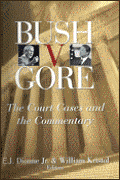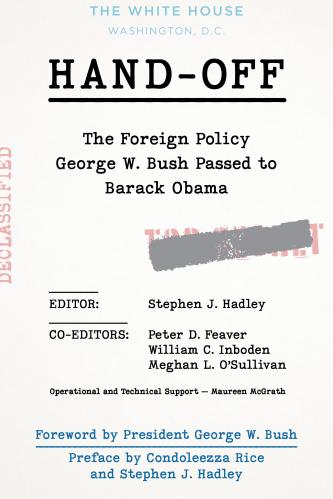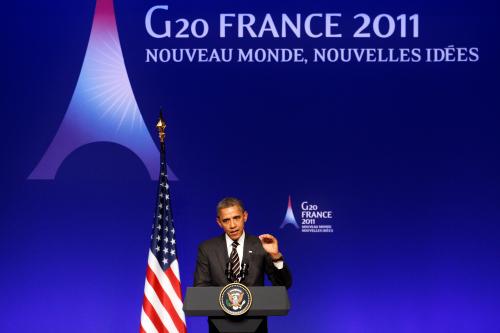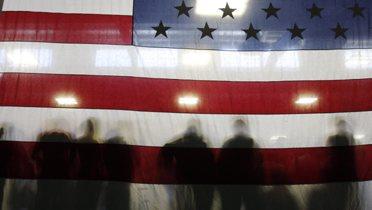Stark partisan polarization is arguably the defining characteristic of our current political moment. While other periods in American history have also featured incivility and deep divides (anyone remember Bleeding Sumner?), today the divide between parties not only encumbers coalition-building and policy-making, but also even how regular people work and shop.
Some political figures are more polarizing than others, of course, so in the recent 2018 Presidents and Executive Politics Presidential Greatness survey, we wanted to gauge not just who dozens of experts felt were the greatest (and least great) presidents, but also which presidents they felt were the most polarizing.
In addition to coming in last in the overall greatness rating, President Trump was ranked by our surveyed experts as the most polarizing of all presidents, as we show in Figure 1. The Trump White House pursued fractious policies in seeking to implement a travel ban, dismantling Obamacare, withdrawing from a global climate pact, and agreeing to move the U.S. embassy in Israel to Jerusalem. After Trump, the presidents perceived as the most polarizing include Abraham Lincoln, who ranks at the very top of the overall greatness scale, and James Buchanan, who joins Trump at the very bottom.

Interestingly, Presidents Grant and Carter are considered two of the least polarizing presidents despite governing during economic crises—the Panic of 1877 and the oil crisis and stagflation in the 1970s. President Hoover, by contrast, fell towards the more polarizing end of the scale. President Truman, the only president to engage in nuclear war, was perceived as one of the least polarizing presidents. Presidents Nixon and George W. Bush fall in the middle of the scale even though both pursued controversial foreign entanglements.
Of course, asking about polarization directly is only one way to get at this question. Like in politics more broadly, experts disagree about presidential greatness, and the data we collected in our survey allow us to identify whether the ratings given by these experts were themselves polarized. Figure 2 displays the average rating of each president as separated by the party affiliation of the expert. Although there were not many Republicans in the sample, some clear differences emerge. President Obama had the highest partisan spread in expert rating, followed closely by Presidents Johnson and Kennedy. The expansion of government through Obamacare and the Great Society is the likely partisan staking point and an approach to government on which Republicans and Democrats fervently disagree. Although Trump is rated as the most polarizing president, experts who identify as Democrats and Republicans nevertheless agree more about how Trump should be rated in terms of presidential greatness than they do about Obama, Johnson, or Kennedy.

The story here is not all about partisanship, however. Experts in both parties agree on some presidents: primarily Presidents Harrison, Buchanan, and Washington, whose rankings were uniformly low (Harrison, Buchanan) or high (Washington). In addition, although Presidents Lincoln and Jackson are rated relatively high on polarized presidencies, there is generally agreement in their overall ratings among presidential experts of both parties.
Disagreement between experts of the same party can also be compared to disagreement between experts of the other party. Figure 3 shows the median absolute deviation in ratings—the average distance that our experts’ Presidential ratings are from the median rating. The first line (Trump) simply indicates that there is much less disagreement among Democrat experts about the rating of Donald Trump than there is among Republican experts: whereas Democrat experts’ ratings of Trump are all very similar (and low), Republicans’ ratings of Trump differ substantially, with some rating him quite high and others very low. In other words, the polarized presidency of Donald Trump has created disagreements both between the two major parties and within the Republican Party.

For other presidents, Republicans disagree most about the rating of Wilson, followed by Obama and Truman. The ratings for President Obama show a similarly large distance between the average disagreement between the parties—yet, both Democrats and Republicans are less consistent in their collective ranking than for Trump. Put differently, both parties disagree more in their rankings of Obama than for Trump, which is unusual because Trump has been in office for just over one year. For Democrats, the most disagreement is on ratings for Nixon and George W. Bush. For the most recent presidents, Republicans disagree most about the ratings of Obama and Trump, and Democrats disagree most about George W. Bush.
As mentioned above, our survey sample featured many more Democrats than Republicans. In order to see what the results might look like if both party groups had equal representation, we weighted the sample so that it was 50 percent Republican and 50 percent Democrat. The results of doing so are depicted in Figure 4. We see that weighting the results to be equally partisan yields a significant increase in the ratings of George W. Bush and Donald Trump, with lesser but noteworthy increases for Warren Harding, Herbert Hoover, and Richard Nixon, among others. Meanwhile, Bill Clinton, Thomas Jefferson, John F. Kennedy, Lyndon Johnson, and Barack Obama all see their ratings decrease, as does Dwight Eisenhower, who was a Republican.

In an era marked by political polarization, it will appear unsurprising to many that partisanship affects how experts rate the greatness of presidents, especially recent ones. Yet, as we have shown, experts who identify with the same party can nevertheless disagree about the performance of our country’s recent presidents. Indeed, if partisanship among experts were a unifying force, those who share the same party affiliation might be expected to rate a president from their preferred party highly, with agreement across those who hold the same partisan identity. This does not, however, appear to be the case. As Republican experts’ ratings of Trump and Obama and Democrat experts’ ratings of George W. Bush make clear, opinions about these presidents can vary greatly among experts, even if they share a partisan identity. Thus, although one can tell a simple story to highlight the differences between how Republicans and Democrats understand recent presidential history, it is important also to tell the story of a more encouraging divide: that those who share the same party affiliation can nevertheless healthfully disagree about the presidents who represent their own party and the presidents from the party who does not.
About the survey: 320 members of the American Political Science Association’s Presidents & Executive Politics section, the premier organization of experts of the American presidency, were invited to complete the online survey, which was administered by Brandon Rottinghaus of the University of Houston and Justin S. Vaughn of Boise State University. 170 surveys were completed online between December 22, 2017 and January 16. 2018. For more information, please contact the authors.









Commentary
Comparing Trump to the greatest—and the most polarizing—presidents in US history
March 20, 2018